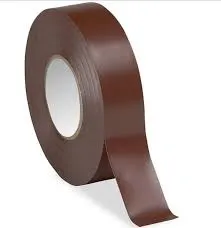Understanding EPDM and Butyl Tape A Comprehensive Overview
When it comes to construction and sealing applications, the choice of materials is crucial for achieving durability, flexibility, and resistance to various environmental factors. Among the myriad options available, EPDM (Ethylene Propylene Diene Monomer) and butyl tape stand out as two effective solutions, each with unique properties and applications. This article delves into the characteristics, applications, and advantages of EPDM and butyl tape, helping you understand why they are widely utilized in various industries.
What is EPDM?
EPDM is a type of synthetic rubber that is widely used due to its exceptional weather resistance, flexibility, and durability. It is primarily composed of ethylene, propylene, and a diene component, which offers it the ability to withstand extreme temperatures, UV radiation, and ozone exposure. These properties make EPDM particularly suitable for outdoor applications where weather conditions can be unpredictable.
EPDM rubber is commonly used in roofing membranes, automotive parts, and seals in various applications. Its resilience against aging and cracking extends the lifespan of products, making it a preferred choice in the construction and automotive industries.
What is Butyl Tape?
Butyl tape, on the other hand, is a type of adhesive tape made primarily from butyl rubber. Known for its excellent adhesion and sealing properties, butyl tape is often used in applications that require a watertight seal. Its ability to adhere to various surfaces without the need for a primer makes it a convenient choice for many projects.
Butyl tape is particularly effective in sealing windows, roofing membranes, and plumbing fixtures. Its unique formulation enables it to remain flexible over time, thus accommodating movement in the materials to which it is applied. This flexibility combined with strong adhesive properties makes butyl tape an excellent option for both indoor and outdoor applications.
Key Advantages of EPDM and Butyl Tape
1. Weather Resistance Both EPDM and butyl tape offer exceptional resistance to weather elements, including rain, sunlight, and extreme temperatures. This makes them ideal choices for outdoor applications where exposure to the elements is a concern.
2. Durability One of the standout features of EPDM is its longevity. EPDM materials can last for several decades when properly installed, reducing the need for frequent replacements. Similarly, butyl tape is known for its long-lasting adhesion, ensuring that applied seals remain intact over time.
epdm butyl tape

3. Flexibility EPDM and butyl tape retain their flexibility even in harsh conditions, allowing them to accommodate structural movement without cracking or breaking. This adaptability is crucial in preventing leaks and maintaining the integrity of structures.
4. Ease of Application Butyl tape is incredibly easy to apply as it does not require complex tools or extensive preparation. This characteristic makes it a favored choice for both professional and DIY projects, while EPDM products often come in rolls or sheets that are straightforward to install.
5. Cost-Effectiveness The durability and longevity of both EPDM and butyl tape translate into cost savings over time, as they require less frequent maintenance or replacement. This cost-effectiveness makes them appealing choices for large-scale projects and tight budgets.
Applications of EPDM and Butyl Tape
EPDM is commonly used in the following applications
- Roofing Systems EPDM roofing membranes provide an effective waterproof barrier, making them ideal for flat or low-slope roofs. - Automotive Industry Used for sealing windows, doors, and other components, EPDM offers a reliable solution for preventing water and air leaks. - HVAC Systems EPDM gaskets are used in various HVAC applications to provide insulation and prevent leaks.
Butyl tape finds its applications in
- Sealing Windows and Doors It effectively prevents air and water infiltration, enhancing the energy efficiency of buildings. - Roofing Repairs Butyl tape is often used to repair and seal leaks on roofs and around vents. - Construction Projects Its versatility makes it suitable for various construction applications where sealing is essential.
Conclusion
In summary, both EPDM and butyl tape offer a wealth of benefits, including weather resistance, durability, flexibility, ease of application, and cost-effectiveness. Understanding the unique properties and applications of these materials can help you make informed decisions for your construction or sealing needs. Whether you’re looking to enhance the longevity of your roofing system or ensure watertight seals in your projects, EPDM and butyl tape are trusted solutions that stand the test of time.
-
XIANGFAN Rubber Tape-Ultimate Solutions for All Your Insulation NeedsNewsJun.24,2025
-
XIANGFAN Rubber Tape-Protection for Industrial and Residential ApplicationsNewsJun.24,2025
-
XIANGFAN Rubber Tape: Superior Safety and Sealing for Demanding EnvironmentsNewsJun.24,2025
-
XIANGFAN Rubber Tape: Reliable Solutions for Every Electrical ChallengeNewsJun.24,2025
-
XIANGFAN Electrical & Industrial Tape: Powering Reliability Across IndustriesNewsJun.24,2025
-
XIANGFAN Electrical & Industrial Tape: Excellence in Every ApplicationNewsJun.24,2025
